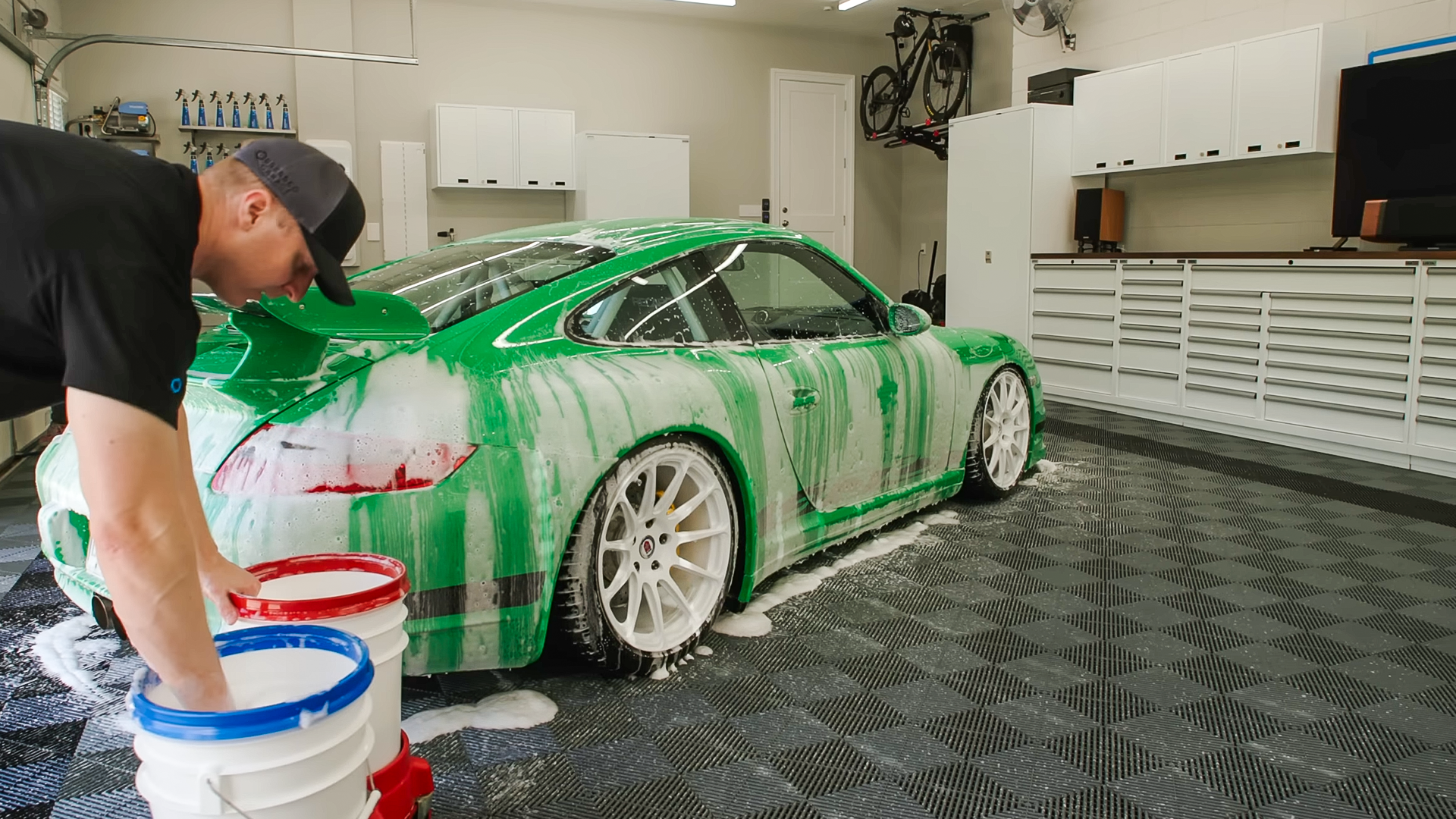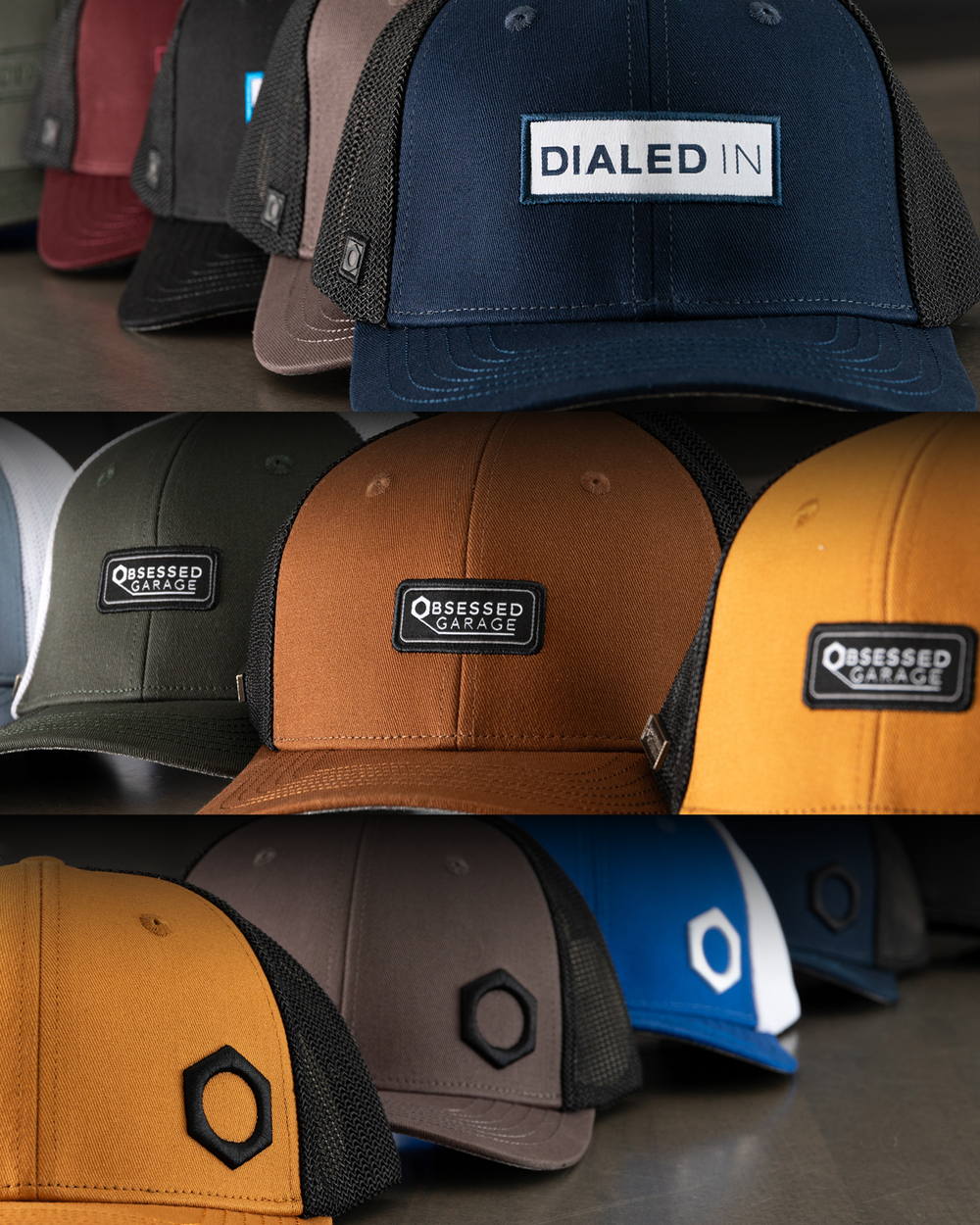The Two Bucket Wash Method: Best Way To Wash Your Car


I’ve been using the two-bucket wash method for several years, which has worked perfectly for me. There’s an obvious upside to washing your car this way, and that’s to avoid scratches on the surface of your paint. Several people in the auto detailing industry will tell you the one-bucket method is far superior to this one, but I’m here to dispel that nonsense. It’s not, and I’ll explain why.
One Bucket Car Wash Method: Why I Don’t Like It
Like with most of my processes, it’s “How I,” not “How You” should do a thing. Although, in many cases, my way of doing things has become the preferred way for many people. I like to go against the grain with most things in my life; it’s invigorating. The one-bucket car wash method is one of those things that’s entirely subjective. I get why people like this way of washing their cars, but I also see the flaws in washing a car this way. This is not to say the two-bucket method is perfect, but it’s undoubtedly the better process.
Reasons I DON’T like the one-bucket car washing method:
- You have to use multiple washing pads/mitts. I did a video back in 2017 where I was washing my wife’s Chevy Tahoe, and if I were to have used the one-bucket method, I would have needed 14 to 18 pads to clean the darn thing. No thanks! I understand the concept behind having multiple pads/mitts, which is to avoid taking dirt from your car washing bucket and plopping it on the paint. But wouldn’t it just be easier to have a wash-and-rinse bucket (two-bucket method) and only have to dunk one pad/mitt in both buckets? It seems logical to me.
- Dirt sits in one bucket with car soap. I get that this is why you’d use multiple pads/mitts, but I don’t want to do that; I only want to use one pad for the entire car. This one-pad process wouldn’t work because I’d be taking all the dirt and dunking it back into my one bucket, which would certainly result in scratching the paint. The grit guard at the bottom of the bucket can help dislodge much of that dirt, but I’d much rather have a dedicated rinse bucket with a grit guard to get most of the dirt off.
- It doesn’t allow for much rinsing. When I dunk my wash pad into my rinse bucket, I want to remove as much dirt as possible, rinsing most, if not all of the soap off. Having only one bucket doesn’t allow me to do this - I have to work harder to get the dirt off by using the grit guard.
I don’t think it’s the worst thing in the world to use the one-bucket method; I just think it’s better to utilize two buckets for maximum rinsing of your wash pad/mitt and to have a dedicated car foam soap bucket that doesn’t hold much dirt (like your rinse bucket would).
Two Bucket Car Wash Method: Why I Like It
Not to sound like a broken record, but as I’ve mentioned, this is my preferred way to wash my vehicles. The two-bucket car washing method ensures that I don’t transfer dirt from my vehicle to my wash bucket because I’m getting all (or most of) the dirt off by dumping my wash pad into my rinse bucket first. You also have to consider the amount of dirty water building up in a one-bucket method. You can combat this using several pads/mitts, but who wants to do that? For me, it’s not efficient, especially when it’s time to clean them. I don’t want to toss 15 pads in the washer.
Reasons I like the two-bucket car washing method:
- Minimizes the chance of scratching your paint. How this works is I’ll grab my Microfiber Madness Incredipad XL, dunk it in my wash bucket, and then make contact with the vehicle's surface. After I’ve used both sides of the pad, I’ll dunk that same pad in my rinse bucket to get all the dirt and soap off. You can use the grit guard at the bottom of the bucket to assist in getting the crap off, but rarely do I use that; if you’re curious about my car washing techniques, check out the write-up I did on How To Do A Hand Car Wash - The OG Way.
- Reduces the amount of dirt on your wash pad/mitt. In a one-bucket system, unless you’re using a bunch of pads, you will experience dirt build-up. In a two-bucket setup, you’ll get the bulk of the dirt off with every dunk in your rinse bucket, along with the help of the grit guard. If you’ve ever watched me wash my cars, you’ll see I’m doing a quick dunkaroo in my rinse bucket, then in my wash bucket, and back to making contact with the paint.
- I like the look and functionality of having a two-bucket setup. Many moons ago, I went on this quest for a solid set of car washing buckets, but I wanted to take it a step further and have my own bucket package. It’s hard to explain, but I think it’s so cool to look at my custom install solution and see my three buckets (wash, rinse, and wheels) right next to it. Not to mention, they serve a valuable purpose.
If you have only been using one bucket to wash your car, I’m telling you, you’re missing out. This isn’t me trying to force you to wash your vehicle my way; it’s me explaining why this is the more effective way to wash it.

The Third Bucket: Three Bucket Method
Have you ever heard of the three-bucket method? Yes, it’s a real thing. The third bucket you should have in your car washing arsenal is a “Wheel Bucket.” Your wheels will generally be the dirtiest part of your vehicle. You don’t want to mix the dirt from your wheels with your wash or rinse bucket. My wheel cleaning process doesn’t involve water being in my wheel bucket; I only have my wheel cleaning tools in there. I have found that having a dedicated bucket for my wheels allows me to keep everything organized. What I typically have in my wheel bucket is:
- EZ Detail Brush (Large)
- Lambskin Wheel Mitt
- Tire Brush
- PF22.2 Foam Cannon with Brake Buster inside
- Pressol bottle (with Brake Buster inside)
- Raceglaze Detailing Brush
You’ll find that having a trio of buckets is a game-changer. No more mixing chemicals with other chemicals. No more transferring dirt from one bucket to the next. If you’re looking to take your car washing game to the next level, I highly suggest you consider the two-bucket… I’m sorry, the three-bucket method.


